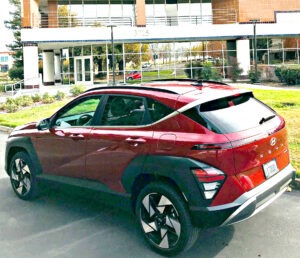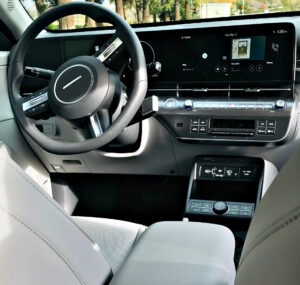In the subcompact crossover SUV class, the Hyundai Kona ranks as one of the standouts.

And despite its success since debuting in 2018, Hyundai is not resting on its laurels. The 2024 Hyundai Kona is already out and is distinguished by a complete redesign that corrected some of its weaker points.
What can one expect from the latest version of the Kona? It has a more modern exterior appearance, stretches 5.7 inches more than the 2023 model, providing more interior space, and the technology has been upgraded.
One more thing to address – cost. The subcompact SUV has a starting sticker price of $24,200 for the base model. Note that with many upgrades the Kona can rise to $33,200. The small SUV has been a nice success story for Hyundai, with sales of nearly 351,000 in its first five years.
Available in four trims (SE, SEL, N Line, Limited), the front-wheel drive Kona is the smallest SUV in the South Korean manufacturer’s lineup, slotted just below the Tucson. There’s also an all-electric Kona (not reviewed here). Among the Kona’s gas-powered competitors are the Chevrolet Trailblazer, Honda HR-V, Kia Niro and Volkswagen Taos.
While considerable praise is earned for the major redesign, what wasn’t addressed was performance. If choosing the standard engine instead of the zippier turbocharged model, be prepared for a pokey ride. While this may not matter to some who use the Kona for an around-town commute vehicle, performance remains an important aspect to many
The turbo engine – 1.6-liter, four-cylinder that generates 190 horsepower and 195 pound-feet of torque – is paired with a 7-speed dual-clutch automatic transmission. It’s quicker than many of its subcompact SUV competitors, going 0-60 mph in 7.2 seconds. All-wheel drive is an option with either engine.
Kona’s base engine is a 2.0-liter, four-cylinder that produces147 horsepower and 132 pound-feet of torque, and is mated to a 6-speed automatic transmission. There’s nothing exciting about the performance (0-60 mph in 9.3 seconds), although the base model gets 28-35 mpg, outperforming the turbo model (24-29 mpg).
The Kona provides composure on tight turns and solid maneuverability on challenging roads. It’s a comfort to know that the Kona has a lot of driver assistance safety features that will keep its driver alert to any possible danger.

Standard safety features include blind-spot monitoring, forward collision warning, pedestrian and cyclist detection, lane-keep assist, lane-departure warning, driver-attention monitoring, rear-seat alert, forward automatic emergency braking, vehicle exit warning, and high-beam assist.
The refreshed interior design includes a new steering wheel (also shared by the 2024 Sonata) and a handy storage shelf on the dash. The size of the center console has been reduced and the transmission selection buttons have been moved for more convenience. Also new is a Digital Key 2 Touch where the driver can use their smartphone as a vehicle key.
The Kona comes standard with a large 12.3-inch touchscreen, a six-speaker stereo, HD Radio, satellite radio, wireless Android Auto and Apple CarPlay, two front USB-C ports, two rear USB-C ports, and Bluetooth capability.
2024 HYUNDAI KONA
- Performance: 2.0-liter, four-cylinder, 147 horsepower; turbocharged 1.6-liter, four-cylinder, 190 horsepower
- Mileage estimate: 28-35 mpg; 24-29 mpg
- Price estimate: $24,200 to $33,200
- Warranty: 5 years/60,000 miles; drivetrain: 10 years/100,000 miles; roadside assistance: 5 years/unlimited; corrosion: 7 years/unlimited
Although it’s a subcompact, the Kona can accommodate five passengers with both rows offering sufficient room and comfort. The cargo area has been increased by 6 cubic feet to 25.5 cubes behind the second row. With the second row folded down, the Kona space increases to 63.7 cubes, making it one of the roomiest models in its class.
The 2024 Hyundai Kona arrived with a full redesign and remains a reasonably-priced subcompact crossover SUV with good versatility.
Weidel on Wheels is featured regularly on www.tahoeskiworld.com. Auto writer Jeffrey Weidel can be reached at [email protected]. Follow him on Twitter at @jeffweidel.